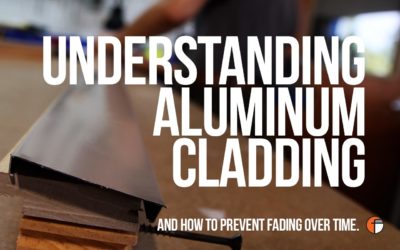Before you point fingers at your builder, contractor, or window company, did you ever consider the EPA? You’re thinking what does the EPA have to do with my rotted windows? Quite a bit actually. It was the EPA that changed the window industry dramatically in 1985 by banning the use of Penta, or Pentachlorophenol as a wood preservative in residential windows.
Since the 1930’s, nearly every major window manufacturer used Penta as a wood treatment to prolong the life of its wood windows, and with great success. I’ve heard customers countless times over my career talk about the windows in their “old” house never going bad. Well, a lot of factors played into why those windows lasted so long, but I’ll save that laundry list for another post. The use of Penta through the mid ’80s certainly contributed to that customer satisfaction.
Pentachlorophenol was basically poison to insects and rot fungus while acting as a moisture blocker, but it also contained chlorophenate compounds, chlorine, and mercury similar to agent orange….yes, that agent orange. Testing found that millworkers exposed to Penta developed a variety of cancers, liver, kidney, and digestive diseases causing the EPA to ban it for residential wood windows much like the ban on lead paint. Penta is still used on telephone poles and rail road ties under extreme guidelines……but little baby Johnny doesn’t chew on telephone poles.
Soon after the ban came down, wood window manufacturers scrambled to find an alternative preservative to prevent rotted windows. Chemical companies hastily cooked up water based versions that were environmentally safer, but failed at an alarming rate. PILT was widely used by some of the largest manufacturers that saw a huge increase in failure of their products in a short time frame resulting in countless lawsuits. Poor consumer ratings, product failure, and the housing crash contributed to many once thriving wood window companies to go under in the late 2000’s.
Recently, the chemical technology has improved, but will never match the performance of the infamous Penta. Woodlife 111 is probably the most widely used today. Fenster Components uses it on our nearly 20 brands of replicated window sash frames. Although it is not a long term preventer of wood rot, it is a positive enhancement over untreated, painted wood.
If you have rotting wood windows produced since 1978 such as Barber & Ross, Caradco, Craftline, Norco, Pozzi, Rockwell, Sealrite, Vetter, or many others, visit our website https://fenstersusa.com to find window replacement parts for your windows.




Good
We purchased wood windows for newly built home in 2000. The thin band of wood securing the bottom of the window glass builds up with ice when our temps plummet. The small piece of wood is secured with brads that turn the wood black in the surrounding area & because our wood is sealed with a clear coat the wood looks terrible now. Black spots show where ever there is a brad. We’ve replaced this small strip of wood, but the problem persists. Windows are “willmar” windows purchased from Heritage Window & Door from Duluth, Mn.
Carla, Great question. It sounds to me like the brads are rusting and leaching into the surrounding wood. Stainless steel brads would have had to be used to prevent this. Unfortunately, that’s not a detail most window manufacturers would think of. There’s not much you can do after the wood has been stained. The stain is too deep to sand it out. There are some wood bleaches out there you could try, but I wouldn’t be too confident with the result. You can’t do much about the spots already there, but definitely use stainless steel brads the next time you replace the glass stop. You might have to give in to a paint job if it looks too bad. Or, to keep the wood grain look, you might try the bleach to lighten the stain, then use a wood stain to darken the whole surface before you r-apply your clear coat. Wish I had a better answer, but I hope that helps. Thanks for commenting.
If the glass is being held in by wood strips then that should be on the interior side of the window. This is usually only found on doors and or sidelights anyway. You should not have any metal whatsoever on a window sash. Period.
Randy, Not sure exactly who’s comment you’re referring to…but, plenty of window manufacturers used an exterior glass stop. Many of those were a metal or vinyl bead. Not to mention every aluminum clad window has metal on it.
Very good reading here, I am on a project now were all windows have issues of rotten jambs , brick mold and sashes and I forgot about this being done by the EPA . Thank you for bringing this back to light for me , and now I can pass this info on to the property manager
thanks Jim
Thanks Jim. Glad we could help.